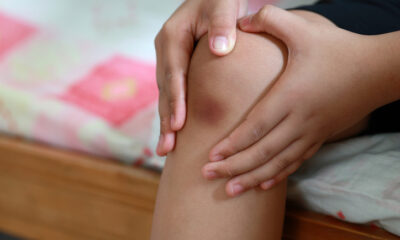News
South Africans Feel the Squeeze as Medical Aid Costs Surge, One Scheme Hikes Nearly 20%

South Africans Brace for Medical Aid Hikes as Affordability Crisis Deepens
The new year will bring another financial headache for South Africans trying to stay covered by private healthcare. Most medical aid schemes have confirmed increases for 2026 and while many kept hikes below 10%, one scheme has shocked members with a jump of nearly 20%.
According to data from Alexforbes, the financial services group tracking the industry, Momentum and Fedhealth lead the mainstream increases with averages of 9.9% and 9.6%, respectively. Bonitas follows at 8.88%, Medihelp at 8.46%, Discovery Health at 7.2%, and Bestmed at 6.8%.
Discovery’s increase will only take effect in April 2026, effectively lowering its annual rise to around 5.4%, the smallest among the big five.
But it’s Sizwe Hosmed Medical Scheme that’s turning heads, announcing a 19.15% premium hike effective 1 November 2025, nearly double the next highest increase.
The Sizwe Hosmed Shock
Sizwe Hosmed’s steep increase follows months of financial turbulence. The scheme was placed under curatorship in September after its reserves plunged to just 5.6%, far below the legal minimum of 25%.
In a statement, the scheme said the drastic increase was needed to “stabilise its finances and correct the historical underpricing of benefits.” It added that operational improvements and cost containment measures are being rolled out to restore long-term sustainability.
Still, for members already struggling with food, fuel, and electricity costs, the hike feels like another blow. On social media, some users expressed anger at what they see as a “punishment for loyalty.” Others said they’re considering downgrading or cancelling entirely.
“A 19% increase in this economy? That’s just tone-deaf,” wrote one user on X (formerly Twitter).
“We’re being priced out of private healthcare, one year at a time,” said another.
The Bigger Picture: A Healthcare System Under Pressure
Medical aid pricing in South Africa is shaped by a perfect storm of inflation, ageing membership, and higher utilisation of healthcare services. Stats SA reported healthcare inflation at 4.7% in August 2025, notably higher than the overall CPI of 3.3%.
As younger, healthier people drop out of schemes, often citing affordability, the financial load shifts onto an older, costlier base of members. Because South African medical schemes must follow community rating, they cannot charge higher-risk members more, forcing schemes to raise everyone’s premiums to remain solvent.
Fazlin Swanepoel, Head of Health at Alexforbes, said this dynamic is reshaping the entire sector.
“We’re seeing more people buy down or downgrade plans just to stay covered. The challenge now is how to attract younger, healthier members through affordable, relevant options that keep schemes sustainable.”
Alternatives on the Rise
The squeeze has pushed more South Africans toward gap cover and low-cost primary care products, limited plans that provide partial access to private doctors and hospitals. These options have exploded in popularity, especially among middle-income earners, but they’re still not a full substitute for medical aid coverage.
Alexforbes warned that the current pace of medical aid inflation is “neither affordable nor sustainable.”
A growing number of South Africans are choosing between healthcare and other essentials. According to infoQuest and Decapod Customer Experience’s August 2025 consumer survey, 41% of households have already cut back on medical aid, insurance, or savings to survive.
A Nation Tightening Its Belt
The same survey revealed just how deep the financial strain runs:
-
90% of consumers are bargain-hunting.
-
85% are cutting luxuries.
-
83% are socialising less or eating out less often.
-
Nearly 70% have cancelled or reduced streaming subscriptions.
-
62% have switched grocery stores for cheaper options.
-
56% have abandoned hobbies.
-
51% are carpooling or relying on public transport.
Some households have gone further, 37% paused education, 29% sold or pawned belongings, and 27% borrowed from family or friends to stay afloat. Informal lending is now outpacing formal loans, with over half of respondents admitting they’re struggling to keep up with repayments.
South Africa’s private healthcare system, once a symbol of middle-class stability, is now becoming out of reach for many who built their lives around it. As medical aids battle rising costs and membership declines, the country risks widening the gap between public and private healthcare access.
The government has yet to announce any new measures to relieve pressure on households ahead of the 2026 National Health Insurance rollout, but for many, the message is clear: staying healthy in South Africa is becoming a luxury.
{Source: BusinessTech}
Follow Joburg ETC on Facebook, Twitter , TikTok and Instagram
For more News in Johannesburg, visit joburgetc.com



























